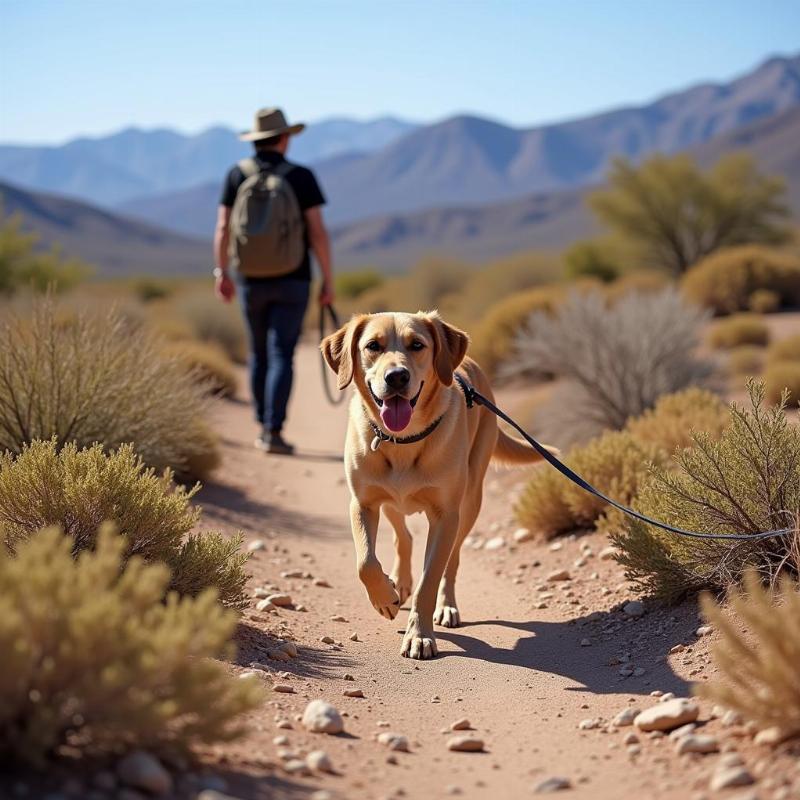Gopher snakes and dogs often cross paths, especially in the western United States, leading many owners to wonder, are gopher snakes dangerous to dogs? While gopher snakes are non-venomous constrictors, interactions can still pose risks to both snake and dog. Understanding these risks and taking preventative measures can help ensure peaceful coexistence.
Understanding the Gopher Snake
Gopher snakes are large, non-venomous constrictors found throughout the western United States. They play a vital role in the ecosystem by controlling rodent populations. They’re often mistaken for rattlesnakes due to their similar markings and defensive hissing, but they lack rattles and venomous fangs. Instead, they kill their prey by constriction.
The Risks of Gopher Snake Encounters for Dogs
While gopher snakes are not poisonous, an encounter can still be dangerous for your dog. A bite from a gopher snake, while not venomous, can be painful and cause infection. Larger gopher snakes could potentially constrict a small dog, although this is rare. More commonly, dogs are at risk of injury from the snake’s defensive bites if they try to attack or play with it. Conversely, dogs can also seriously injure or kill gopher snakes.
How to Prevent Gopher Snake Encounters
Preventing encounters is the best way to protect both your dog and the snake. Keep your dog on a leash when hiking in areas where gopher snakes are common. Maintain a tidy yard, free of debris and rodent attractants, which can lure snakes. Teach your dog a “leave it” command to deter them from interacting with snakes.
 Dog on a leash hiking in the desert
Dog on a leash hiking in the desert
What to Do if Your Dog Encounters a Gopher Snake
If your dog encounters a gopher snake, try to calmly and quickly remove your dog from the area. If your dog is bitten, check the wound for signs of infection and consult your veterinarian. Never attempt to handle the snake yourself. Contact local animal control or a wildlife removal service to safely relocate the snake.
Protecting Your Dog and the Environment
Understanding the nature of gopher snakes and taking preventative measures is crucial for the safety of your dog and the well-being of these important reptiles. By respecting their role in the ecosystem and avoiding unnecessary interactions, we can ensure harmonious coexistence.
Conclusion
While gopher snakes aren’t inherently dangerous to dogs due to their lack of venom, encounters can still result in injuries for both animals. By understanding the risks, taking proactive preventative steps, and knowing how to react in an encounter, you can protect your furry friend and these beneficial reptiles. Remember, responsible pet ownership includes protecting local wildlife.
FAQ
- Are gopher snakes aggressive? Gopher snakes are generally not aggressive, but they will defend themselves if they feel threatened.
- Can a gopher snake kill a dog? It’s extremely rare for a gopher snake to kill a dog, but larger snakes could potentially constrict a small dog.
- What are the signs of a gopher snake bite on a dog? Signs of a gopher snake bite include puncture wounds, swelling, and redness.
- How can I keep gopher snakes away from my yard? Keep your yard clean and free of rodent attractants, which can lure snakes.
- What should I do if I see a gopher snake in my yard? Contact local animal control or a wildlife removal service to safely relocate the snake.
- Do gopher snakes lay eggs? Yes, gopher snakes are oviparous, meaning they lay eggs.
- What do gopher snakes eat? Gopher snakes primarily eat rodents, such as gophers, rats, and mice.
Beautdogs.us is your premier source for comprehensive and engaging dog care information in the US. We offer expert advice on breeds, care, and products, catering to both new and experienced dog owners. Our team of Certified Pet Professionals and Content Strategists is dedicated to providing authoritative yet accessible content, making us America’s trusted resource for holistic dog care. Contact us for more information at [email protected] or call us at +1 501-555-7529. Visit Beautdogs.us for more expert advice and resources.